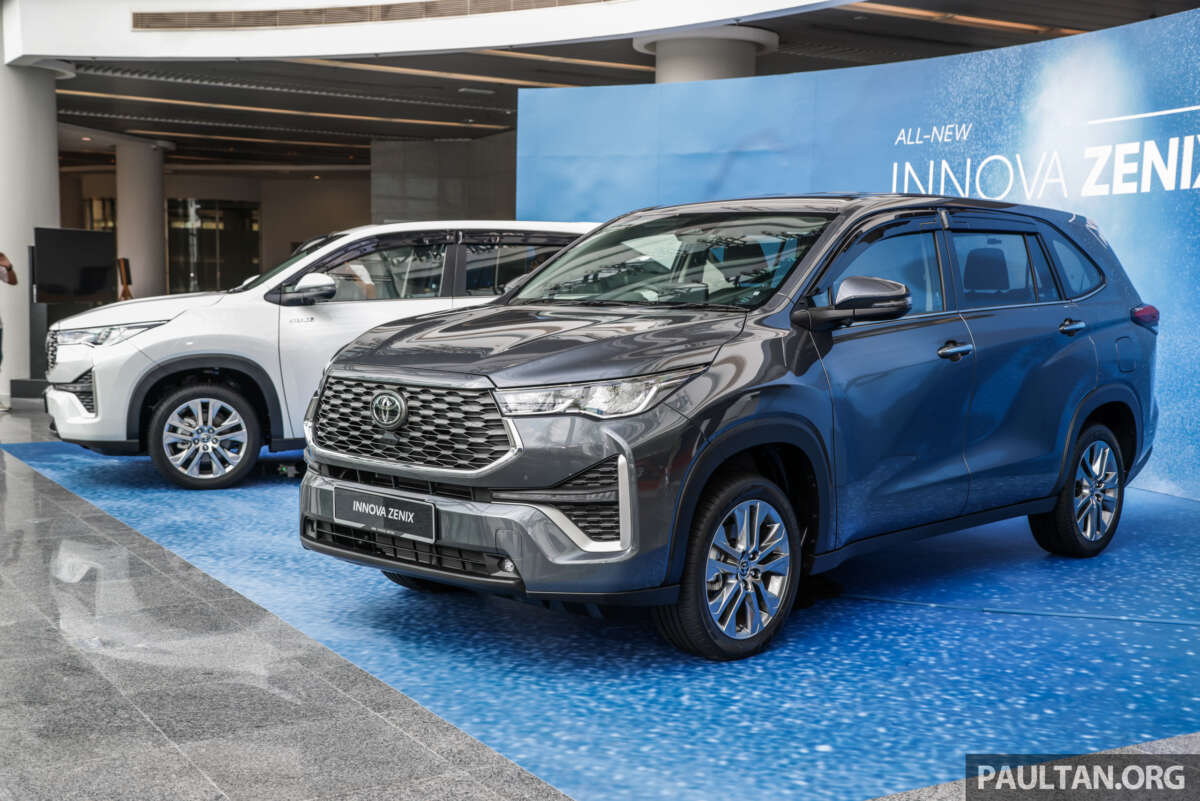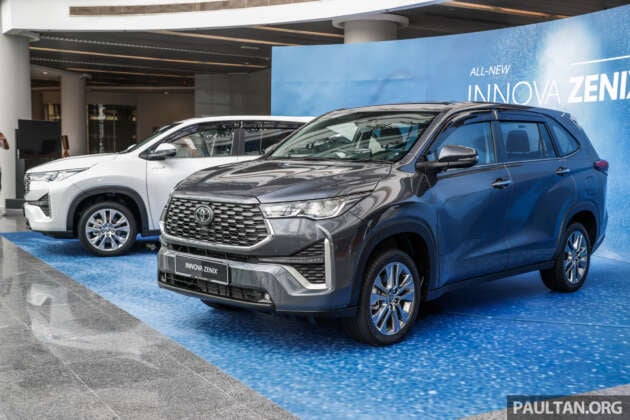
UMW Toyota Motor (UMWT) has officially launched the Toyota Innova Zenix. The third-generation MPV, now sporting SUV styling, is available in two variants in Malaysia – the 2.0 V with a 2.0L naturally aspirated petrol engine, and the 2.0 HEV hybrid. They are priced at RM165,000 and RM202,000 respectively, on-the-road excluding insurance.
The Innova Zenix is a CBU import from Indonesia, where it debuted in November 2022, and UMWT says that the CKD locally assembled Innova 2.0 X and 2.0 G of the CG generation will continue to be sold at RM134k and RM142k. This means that the Zenix is a separate model for those looking for a little more style and luxury in their three-row people carrier, and not a direct replacement of the familiar Innova.
At 4,760 mm long and 1,850 mm wide, the Zenix (we’ll call it this from now) has roughly the same footprint as the Innova CG – it’s just 20 mm longer and 15 mm wider, although it looks much more substantial in the metal. Even the height is similar, so the visual bulk is down to the SUV-style design. And proportions – the 2,850 mm wheelbase is a full 100 mm longer. The wheels are 18-inch items with 225/50 tyres for both V and HEV.
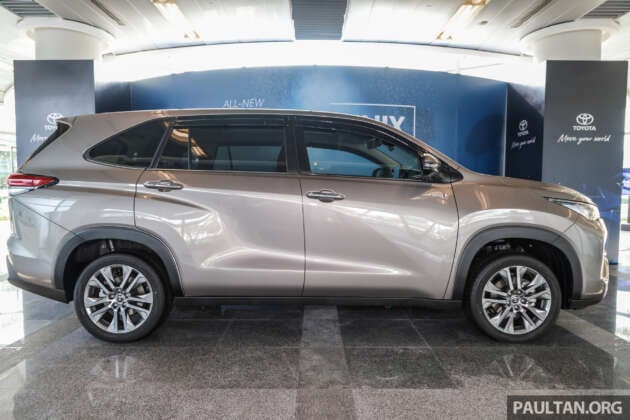
Interestingly, Toyota says that the Zenix’s overhangs have been slashed (by 55 mm in front and 25 mm at the rear) without compromising the approach and departure angles provided by the Innova CG. Ground clearance is 185 mm and the cabin has a flat floor. All these were made possible by a new platform and construction.
The Zenix is not just a new top hat but a truly all-new model sitting on a new platform, specifically the GA-C version of the Toyota New Global Architecture (TNGA). As such, the Innova is now front-wheel drive and has a monocoque body. Since its birth in 2005, the Innova has had a ladder frame chassis and rear-wheel drive (IMV platform, shared with the Hilux), so this is as huge a shift as you can find for different generations using the same name – should they have dropped “Innova” from the badge?
Toyota says that the migration from chassis frame to TNGA brings about greater rigidity, better agility and improved ride comfort, while a lower centre of gravity improves stability. Your pocket will feel it too, as a whopping 170 kg is saved from the switch to TNGA, which of course translates to better fuel economy. The 2.0 V weighs in at 1,595 kg, while the HEV is 90 kg heavier at 1,685 kg.
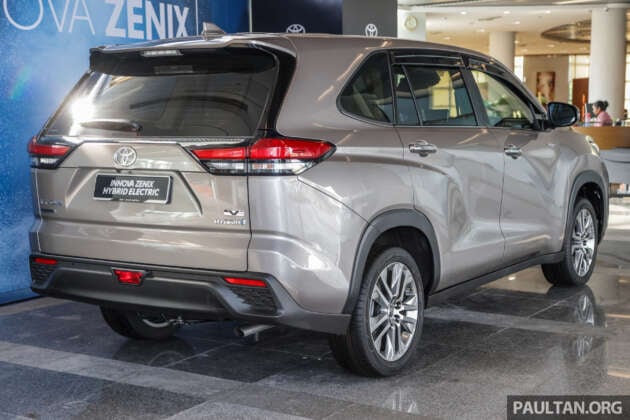
The Zenix is essentially a three-row MPV with eight seats in 2.0 V form and seven seats in 2.0 HEV guise. The hybrid gets two captain seats in the middle row for a 2-2-3 formation, the two individual chairs replacing a 60:40 sliding bench in the 2-3-3 petrol.
Yes, the Zenix is technically an eight-seater and not a seven-seater as the rearmost row has three sets of seatbelts and three headrests. Three in the third row sounds near impossible though; so perhaps it’s better to treat the MPV as a 6/7-seater. By the way, the middle headrest has its special slot in the boot so it won’t be flung around. As before, the spare wheel is mounted under the car.
It’s all new under the hood too. The Zenix 2.0 V is powered by a Dynamic Force 2.0-litre naturally aspirated engine with 174 PS at 6,600 rpm and 205 Nm of torque from 4,500 to 4,900 rpm. Max power is the highest for an NA engine in Malaysia currently, and much higher than the previous-gen Innova’s 138 hp/183 Nm, although it must be said that the old car’s max output was produced lower in the band, at 5,600 and 4,000 rpm respectively.
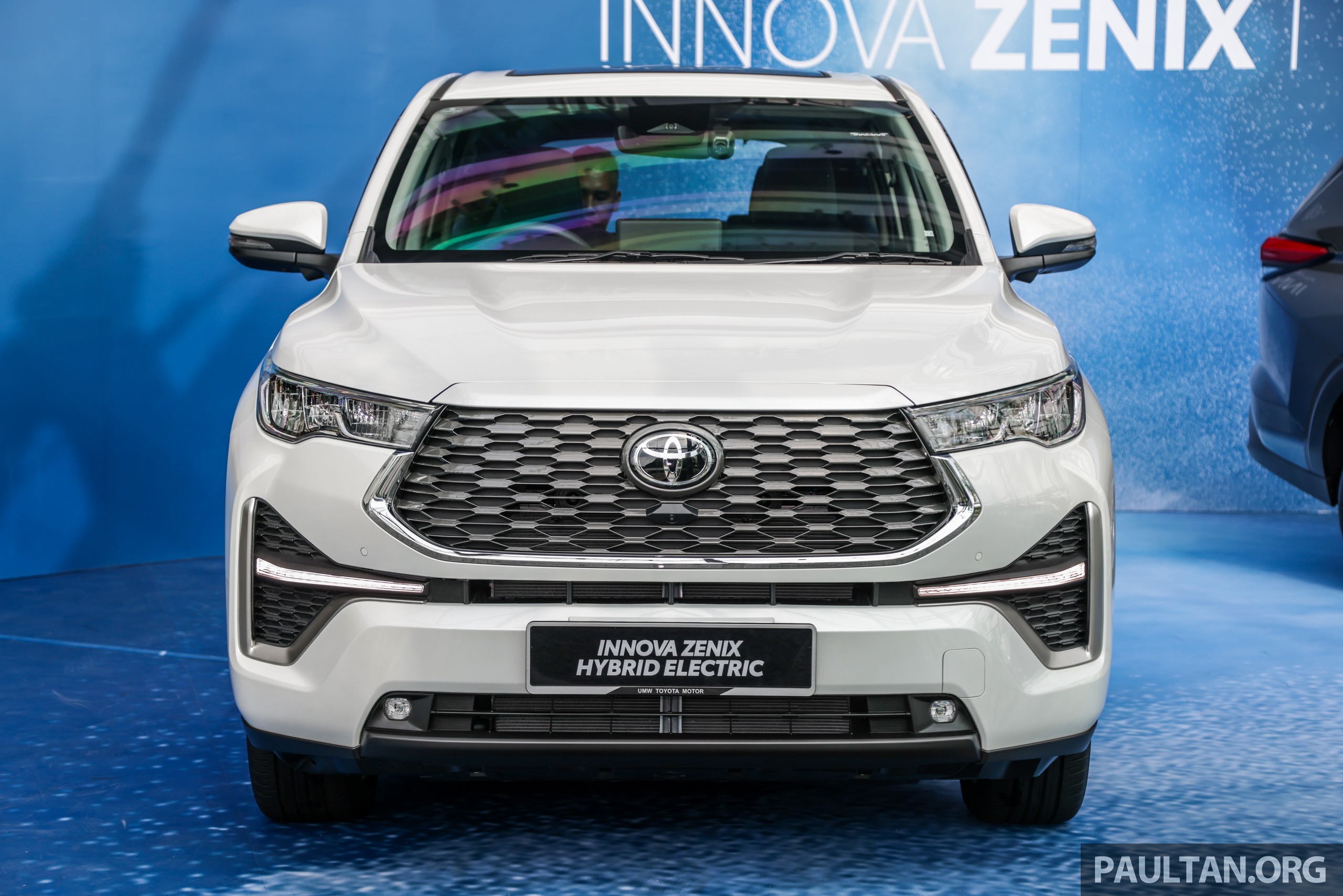
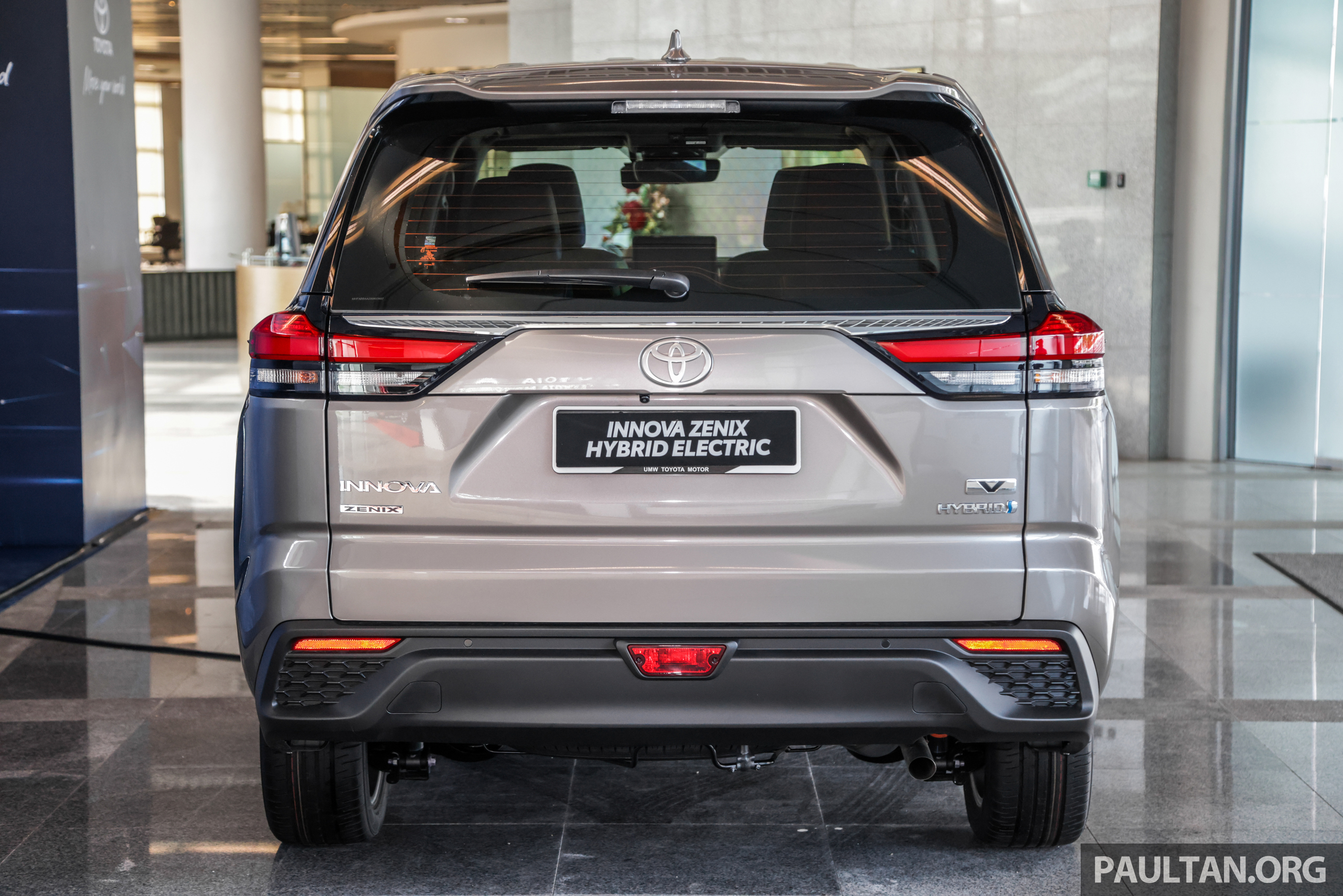
By the way, this is the same M20A-FKS engine powering the Toyota Harrier and Lexus UX, which are much higher up in the Toyota premium scale.
Gone is the six-speed torque converter automatic, replaced by a Direct Shift CVT with 10 virtual ratios in its ‘Sequential Shiftmatic’ programme (with steering paddles). This new gearbox has a ‘launch gear’ mechanism used with a conventional belt and pulley mechanism. The switch from 6AT to CVT brings better fuel efficiency, quietness and stronger acceleration from low speeds, Toyota says.
The Zenix 2.0 HEV is powered by a fifth-generation hybrid electric powertrain combining a permanent magnet synchronous motor and nickel-metal hydride (NiMh) battery to a 2.0-litre naturally aspirated NA engine from the same Dynamic Force family. The M20A-FXS in the HEV runs on an Atkinson cycle and has high thermal efficiency of 41%. Alone, it has 152 PS/188 Nm, but total system output is 186 PS. The e-motor makes 206 Nm on its own.
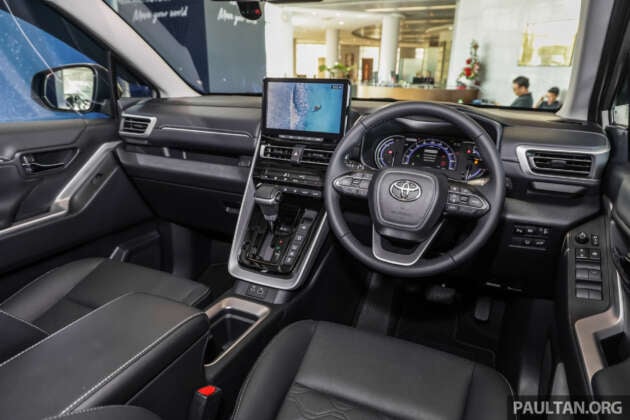
The gearbox is an E-CVT and there are three selectable drive modes – Normal, Power and Eco. The hybrid also has an EV Mode button that when pressed, forces the system to run without any involvement from the ICE. Obviously, this will only happen for very short distances as the Zenix’s self-charging hybrid battery capacity is only 1.3 kWh.
No mention of fuel consumption in UMWT’s press materials, but we checked and the claimed combined figure is 6.7L per 100 km (14.9 km/l) for the 2.0 V and 4.6L per 100 km (21.7 km/l) for the HEV. The hybrid’s FC is fantastic for a big people carrier, but buyers would have also forked out a RM37,000 premium over the 2.0 V in the first place.
Moving on to kit. The Zenix 2.0 V gets automatic LED headlamps with auto high beam (manual levelling), LED daytime running lights and foglamps, LED tail lamps, auto retractable wing mirrors with welcome lamp, and the above-mentioned 18-inch silver rims on the outside.

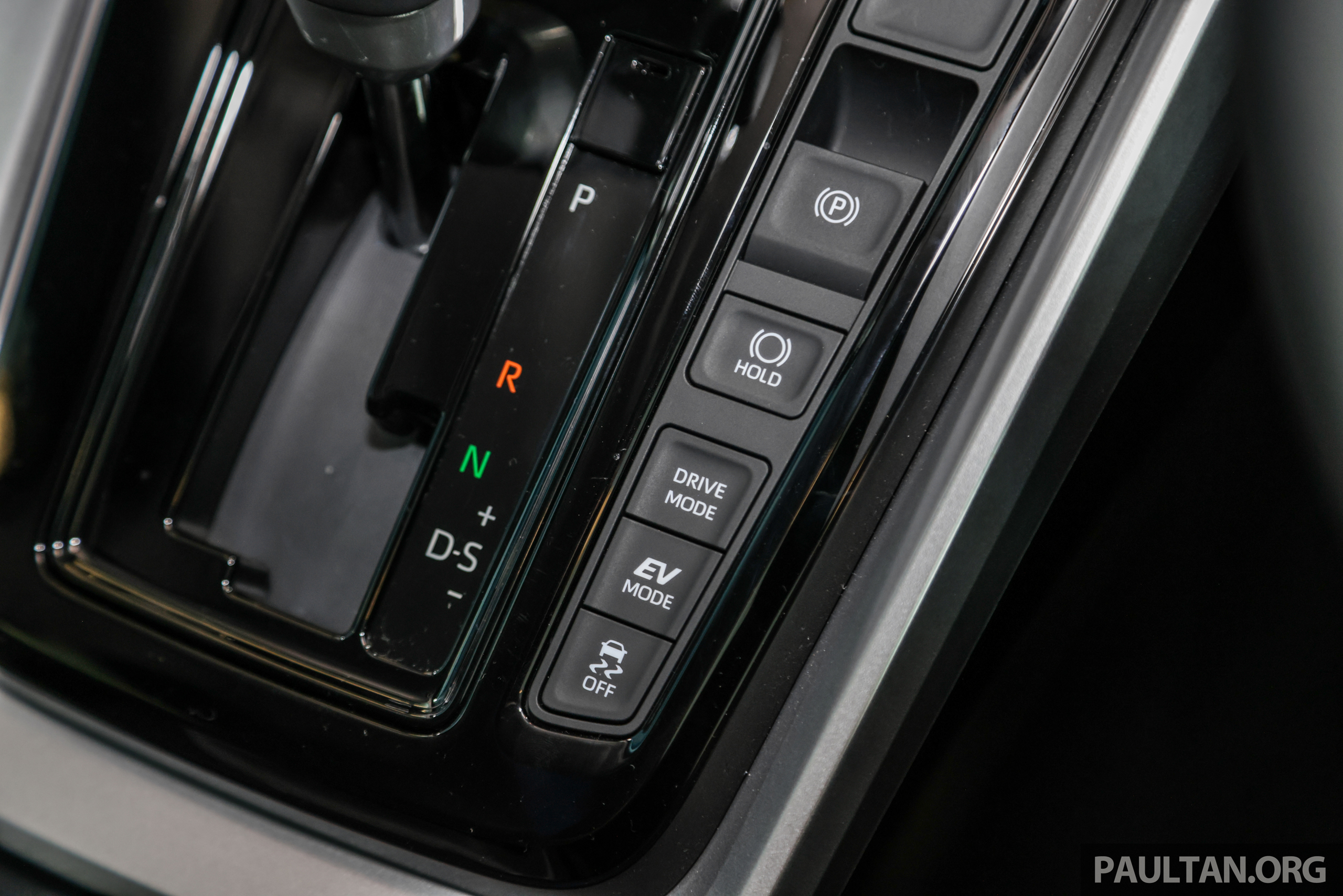

Moving inside, you’ll find keyless entry and push start (key fob has the Innova logo), electronic parking brake with auto hold, a 7.0-inch TFT colour multi-info display (flanked by analogue dials), automatic air con (front and rear), rear AC with fan speed control and roof vents for second/third rows, tilt/telescopic leather steering wheel, leather seats (powered for driver) and an electrochromic rear view mirror (anti-glare).
The head unit is a 10.1-inch touchscreen with wireless Apple CarPlay and wired Android Auto. On the roof above the middle row are two strips of blue lights – the on/off switch is clustered with the rear AC controls.
Last but certainly not least for a family machine is a powered tailgate. It opens to a cargo space of 239 litres with all seats erect and a massive 690 litres with the third row folded, up to the window line. Note that the third row now folds flat into the floor; previously, they were flipped up to the sides.
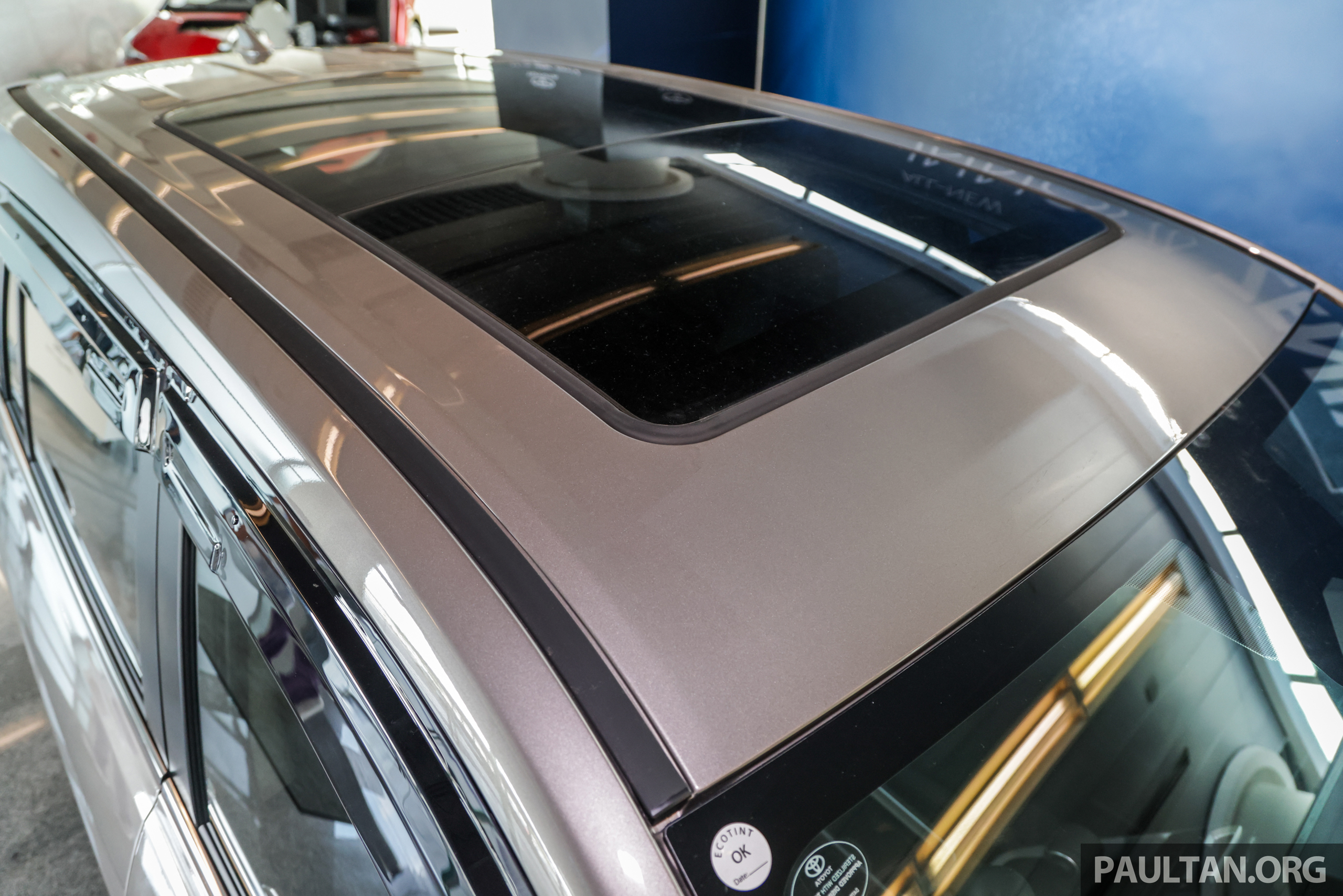
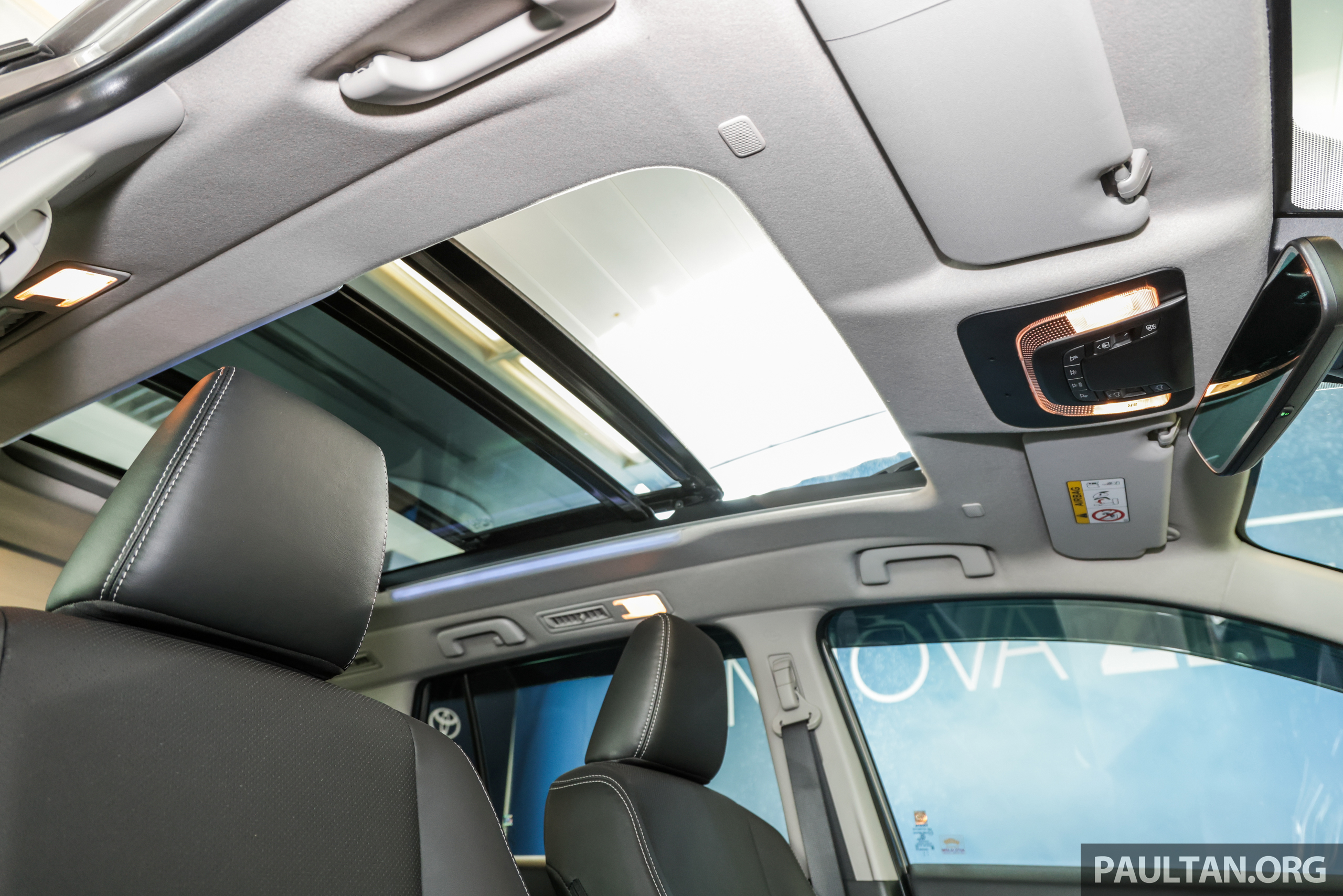
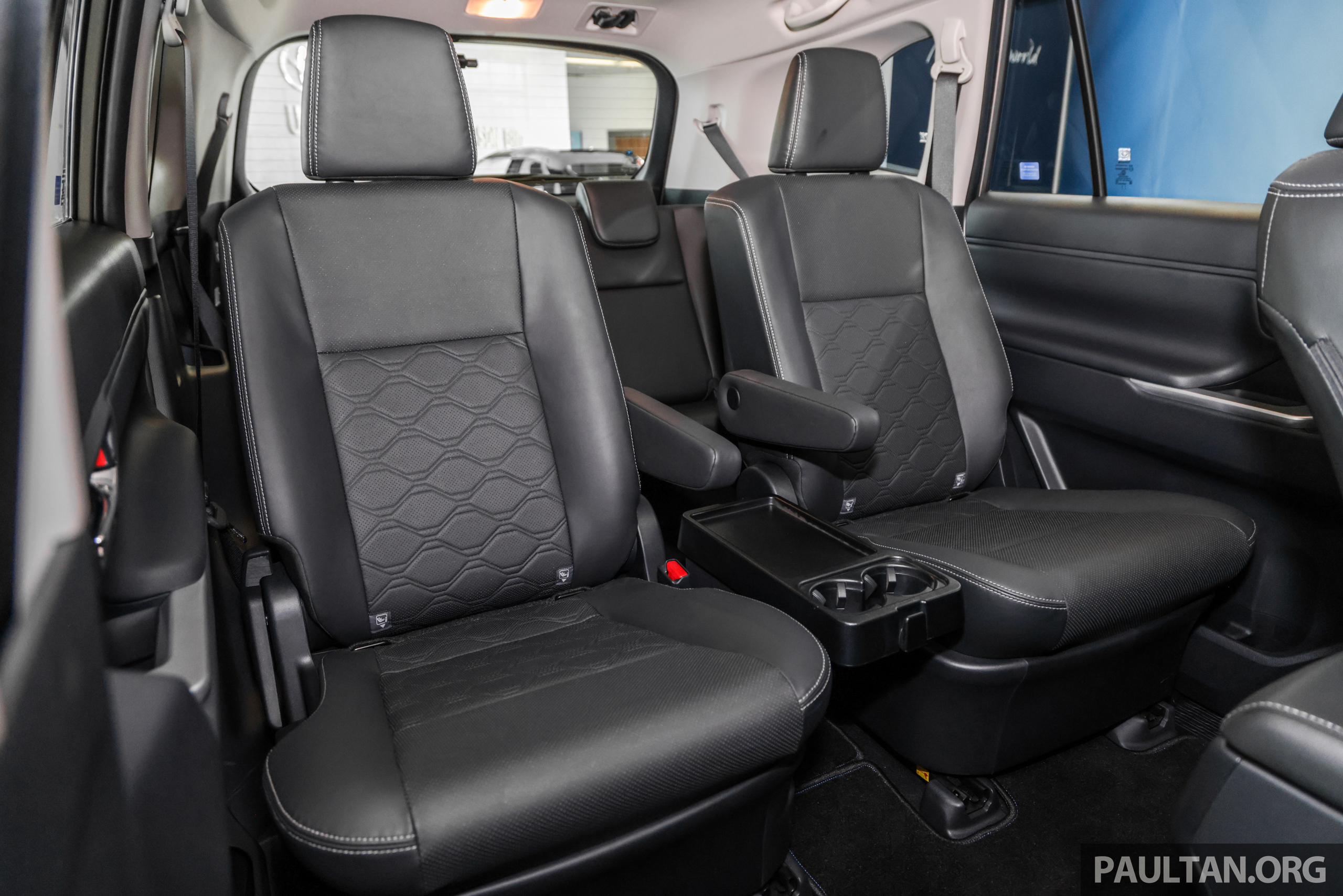
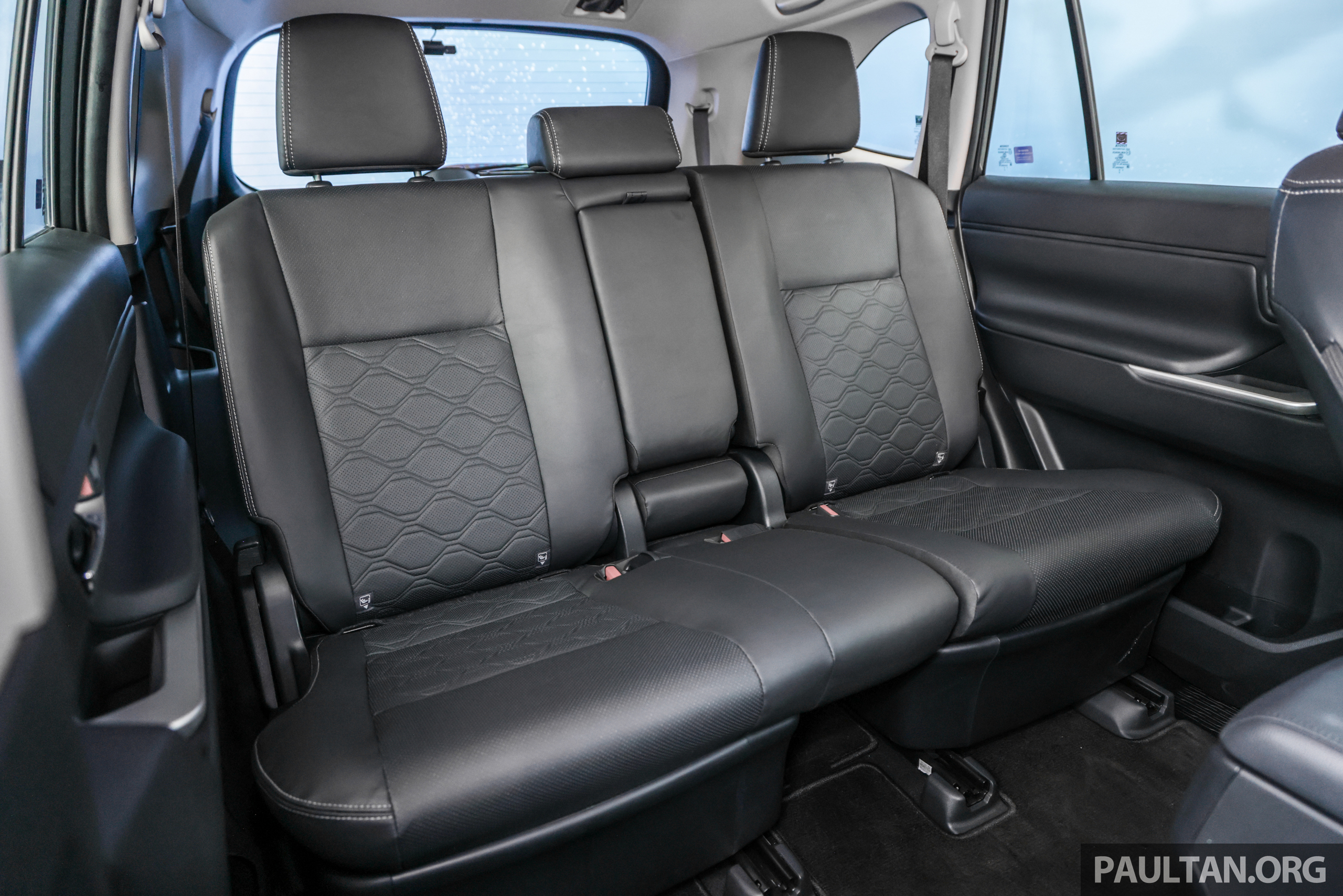
Going for the 2.0 HEV means paying mostly for the hybrid powertrain, as the kit count is just slightly longer than the 2.0 V’s. The headlining exclusive items are captain seats in the second row; the two individual seats cutting down max occupancy to seven people (2-2-3). In between the manual chairs is a foldable tray with two cupholders. Occupants also get to enjoy a large panoramic sunroof that covers the front two rows.
The row of buttons next to the gear lever is more populated in the HEV, and that’s because of the EV Mode button. The other button is Drive Mode instead of Eco Mode – that’s because only the hybrid has Normal, Power and Eco modes. Aside from that, and the hybrid-specific graphics in the MID, both petrol and hybrid are identical. Oh, and hybrid badging on the exterior’s sides (unusually, below the wing mirror) and tailgate.
On the safety side of things, both variants get six airbags and the Toyota Safety Sense 3.0 driver assist suite, which includes Pre-Collision System (PCS or AEB), Dynamic Radar Cruise Control (DRCC or ACC), Auto High Beam (AHB), Lane Departure Alert (LDA), Lane Tracing Assist (LTA) and Road Sign Assist (RSA).
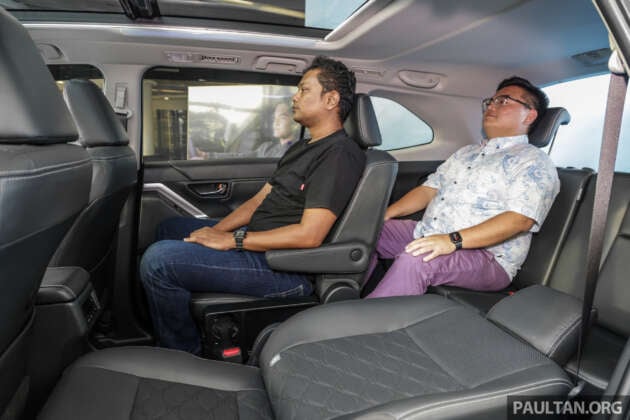
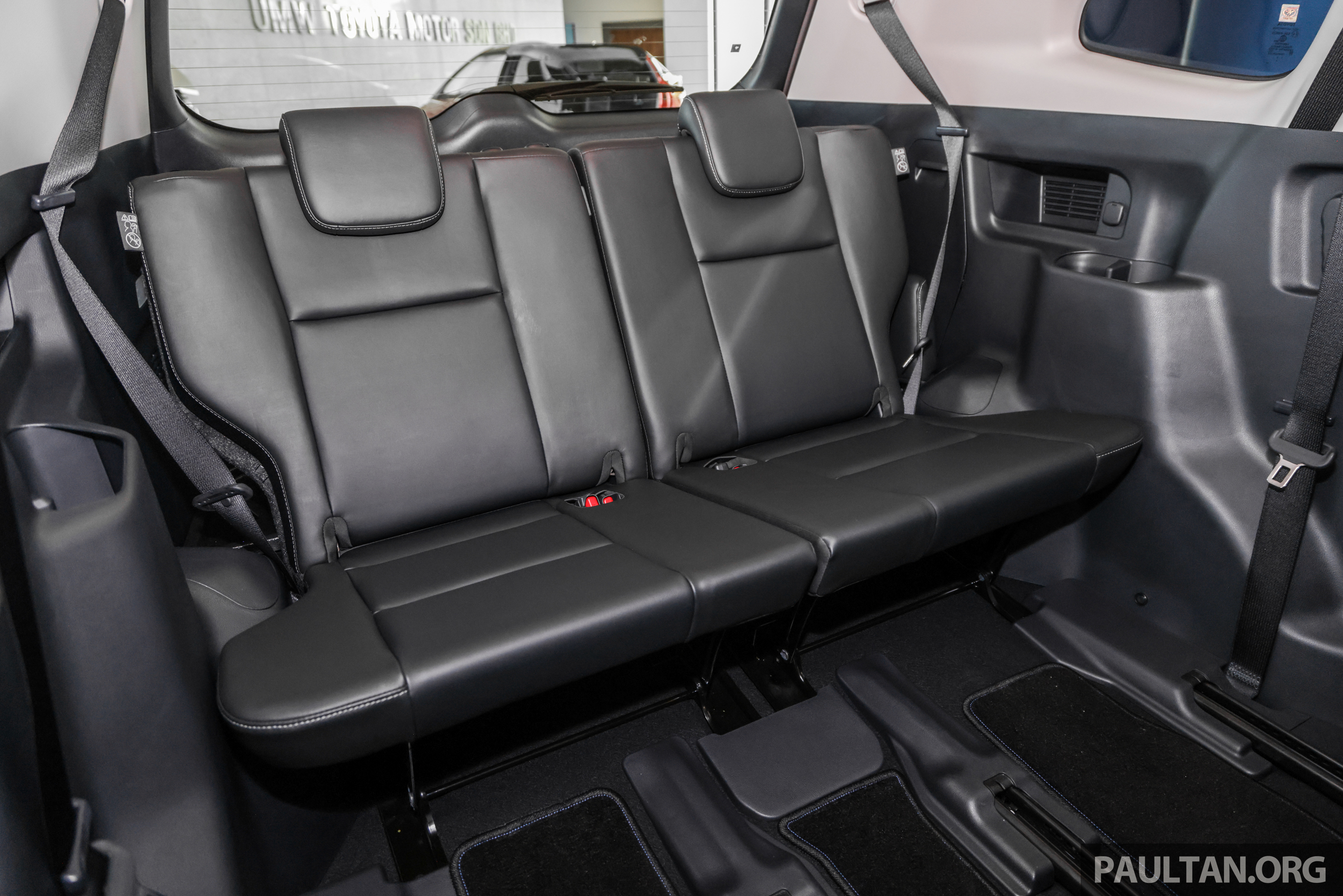

UMWT says that the Zenix is the first model in the local Toyota line-up with the latest TSS 3.0. Basically, it’s the same functions but with an expanded range of capabilities, like how Perodua’s current ASA 3.0 is better than the original version that debut in 2017. TSS 3.0 gets a new camera sensor with an expanded detection angle and around two times further forward detection. The latest radar sensor is able to detect obstacles closer to the sensor.
If you’re unfamiliar with RSA, basically, the camera detects road signs and informs the driver via the instrument panel. For now, RSA recognises speed limit signs (other types of signs in the future) and it can be set to sync with ACC to override the set cruising speed. Speaking of ACC, the system can now evaluate the situation two vehicles ahead for an earlier response, and it can also adjust the speed when making lane changes when ACC is active. Also, AEB now works at intersections to prevent collisions with cross traffic or vehicles making a turn.
In addition to TSS, the Zenix comes with Blind Spot Monitor (BSM) and Rear Cross Traffic Alert (RCTA). The very comprehensive safety package is completed with a 3D panoramic view monitor (360-degree parking camera), tyre pressure monitoring system, dashcam and UMWT’s vehicle telematics system. There are two Isofix child seat mounts for the middle row.
Both the V and HEV are available in five colours – Platinum White Pearl, Silver Metallic, Grey Metallic, Attitude Black Mica and Avantgarde Bronze Metallic. There’s also a solid white option for fleet customers.
The Innova Zenix comes with a five-year unlimited mileage factory warranty. In addition, the HEV’s hybrid battery pack gets a separate eight-year warranty, also unlimited mileage. The latter includes the inverter and power management control ECU; basically, all the hybrid bits. Once again, the 2.0 V is priced at RM165,000 while the 2.0 HEV is yours for RM202,000, on-the-road excluding insurance.
The Zenix looks way more premium than the Innova CG (I see RAV4 in the rear and am getting some Highlander vibes from the face), and just as well, because it’s priced a fair bit higher too. All-new bones and heart aside, the SUV-esque design sets the Zenix apart and puts it alongside actual three-row SUVs such as the Proton X90, Mazda CX-8 and the soon-to-be-launched Chery Tiggo 8 Pro in the market. The hybrid option is unique, but it comes at a price. What do you think of the Toyota Innova Zenix’s looks and package?
GALLERY: 2023 Toyota Innova Zenix 2.0 HEV
GALLERY: 2023 Toyota Innova Zenix 2.0 V
GALLERY: 2023 Toyota Innova Zenix official photos
GALLERY: 2023 Toyota Innova Zenix Malaysian brochure
Looking to sell your car? Sell it with MyTukar.

